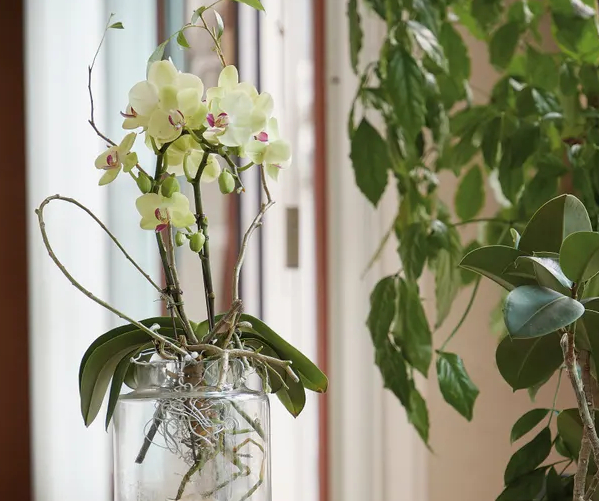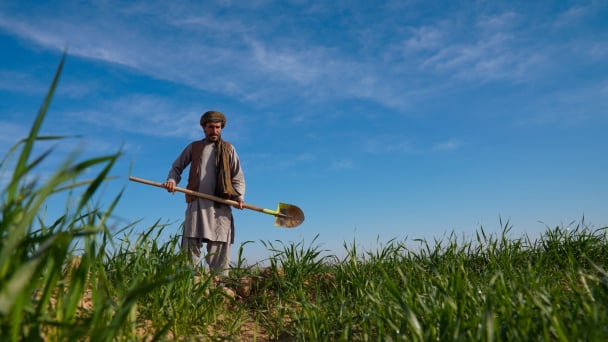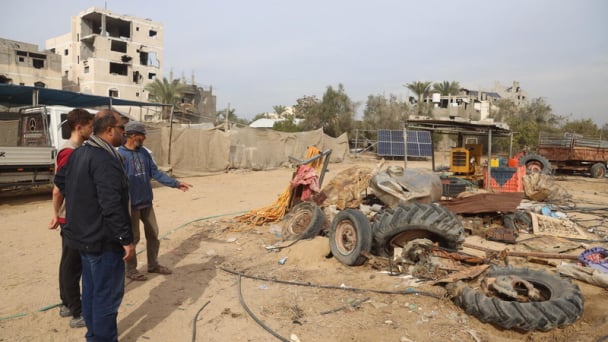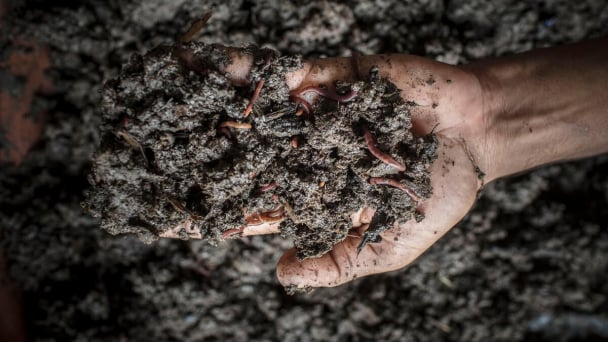August 12, 2025 | 20:59 GMT +7
August 12, 2025 | 20:59 GMT +7
Hotline: 0913.378.918
August 12, 2025 | 20:59 GMT +7
Hotline: 0913.378.918

Testing the water: the moth orchid Phalaenopsis. Photo: Getty Images
Hydroponics is one of those growing techniques that seems to be capturing people’s imagination at the moment – fuelled perhaps by the slew of CGI images showing futuristic vertical farms atop skyscrapers that are flooding social media these days. Fortunately, you don’t have to have an engineering degree or be the owner of a glass-covered penthouse to try this out for yourself. Here’s my beginner’s guide to home hydroponics.
This growing technique can be as simple or complicated as you want it to be, but at its heart is the basic fact that plants do not need soil to grow. In fact, generally speaking, all that soil provides for plants is a source of moisture, air and minerals – roughly in that order. Dispensing with soil means you can grow plants without any growing media whatsoever, in clear glass vases, orbs or bowls.
If you are an indoor gardener like me, this not only means less dirt and mess, but it also removes any questions about over – or underwatering, and allows you to appreciate not just the beauty of the leaves and flowers of the plant, but the architecture of the roots, which are all too often hidden from view.
Technically, almost any plant can be grown this way. However, there are candidates that are particularly suited to this technique which also boast attractive-looking roots.
Perhaps the best example is the moth orchid, Phalaenopsis. All you need to do is gently lift your plant out of its pot and tease away any bark chips from around its root ball. Snip off any roots that are brown or shrivelled and then lower the plant into a glass container. Fill the vessel up with a little water until it covers the bottom third of the roots, leaving the top two-thirds in the air and, hey presto, you’re done. That’s all that is involved.
The same technique can also be used on a huge range of plants in the aroid family, from monstera to philodendron, alocasia to epipremnum, as well as some of the cane begonias such as maculata and even, of course, the lucky bamboo, Dracaena sanderiana.
I take these plants out of their pots and carefully wash off as much growing media as I can from the roots. Leaving them overnight in a bucket of water softens up the last traces of compost, which can then be blitzed away with a spray bottle to reveal pure white roots.
These terrestrial species need less airflow at their roots than epiphytic moth orchids, so I keep the water at the same level as the original compost, totally covering the root zone. If, like me, you live in a hard-water region, bottled water is a good option to keep the glass clear and limescale-free. All I do each week is top up the moisture reserve to the original water level.
What about nutrients? Well, once a month I top them up with liquid fertiliser instead of plain water, leave the plants to absorb this overnight and then rinse them out the next day and replace the water. It’s all very simple, so if you want to create a really quirky indoor display, there’s nothing holding you back.
(The Guardian)

(VAN) Food production cannot be reactivated without a significant shift in accessibility, safety, investments and support for local communities and livelihoods.

(VAN) Officials are debating how to placate farmers’ need for migrant labor without appearing to offer amnesty to undocumented immigrants.

(VAN) New partnership to help over 150,000 people enhance food production, incomes and climate resilience across 15 provinces by May 2026.

(VAN) Floods that damaged hydropower dams in Nepal and destroyed the main bridge connecting the country to China show the vulnerability of infrastructure.

(VAN) Immediate and sustained ceasefire and unhindered humanitarian access are critical to avert imminent Famine.

(VAN) FAO-led publication outlines structure and highlights agenda including new harmonized indicators and capacity building accessible to all.

(VAN) Energy group experts left after draft guidance on global warming plans ‘did not reflect the industry view’.